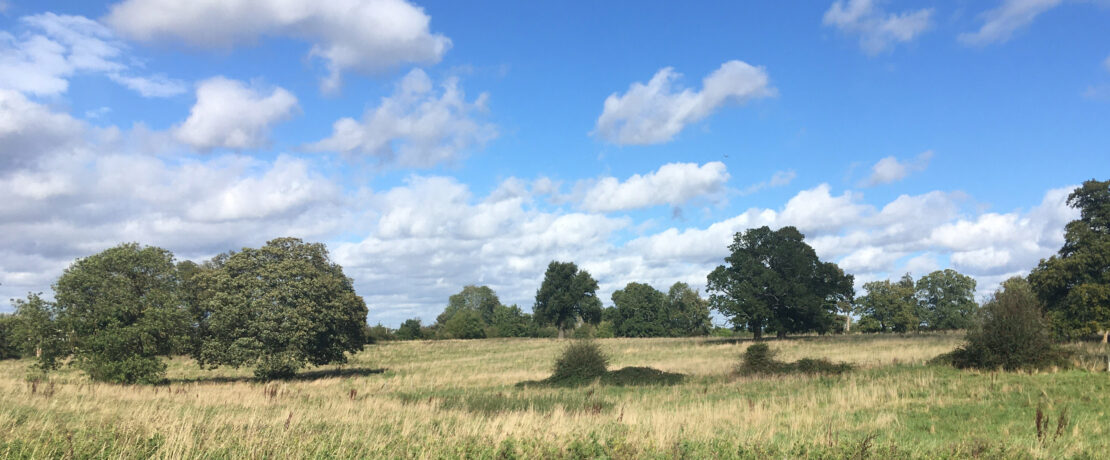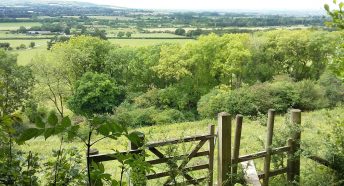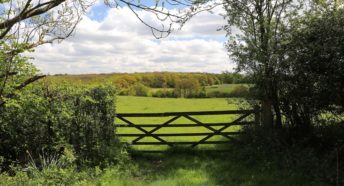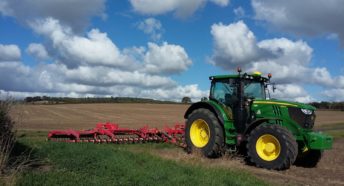Revisions to the NPPF should help protect Hertfordshire countryside
On 19 December the government published long-awaited revisions to the National Planning Policy Framework (NPPF), which sets out planning policies for England. The changes should – in theory – help protect the Hertfordshire countryside which is increasingly under threat from speculative development.
We have long campaigned for stronger protections for the Green Belt and the wider countryside. The newly revised NPPF brings some good news, but not as much as we had hoped. Here are the highlights.
Good news for the Green Belt
The revised NPPF reinforces the importance of Local Plans, and incentivises local authority Councils to get on with making their Local Plan and keeping it up to date. Importantly, the government has added a new paragraph to the NPPF that makes it clear that Councils do not need to review their Green Belt nor allocate Green Belt land for development when preparing or updating their Local Plans. With regard to Green Belt land, the revised NPPF states explicitly “Once established, there is no requirement for Green Belt boundaries to be reviewed or changed when plans are being prepared or updated.” (Paragraph 145, NPPF).
Planning barrister Paul Tucker KC of Kings Chambers, in commenting on this change, said “That is a very significant change in relation to national policy. That means we have for the first time in 70 years of Green Belt policy, a policy saying we do not have to review our Green Belt boundaries. Not exporting need (i.e. large cities forcing neighbouring local authorities to accept some of the cities’ own housing need) and not having to review Green Belt boundaries, I think may be a really seismic shift in how we plan in relation to the most sensitive parts of our country.”[1]
6 out of our 10 local authorities in Hertfordshire are in the process of preparing or updating their Local Plans: Dacorum, Hertsmere, St Albans and Three Rivers have all published early-stage Regulation 18 Local Plans, and East Hertfordshire and North Hertfordshire Districts are both due to review and update their adopted Local Plans. So the revised policy on Green Belt is tremendously relevant for the majority of people in our county.
Partial good news about housing targets
One of the main reasons the Hertfordshire countryside is under so much development pressure is the top-down imposition of housing “targets” calculated using the Standard Method. Unfortunately, national planning practice guidance still requires the use of out-dated 2014-based household projections that we know over-inflate future household numbers for Hertfordshire, as shown by the 2021 census. But the good news is that housing need calculated in this manner is now only an “advisory starting point,” not a mandatory target. This means that local authorities may now, when preparing or updating their Local Plan, take into account constraints such as Green Belt and other protected designations, and set their own realistic housing “target” accordingly.
Possible good news about agricultural land
The revised NPPF says that the availability of land for food production should be considered when local authorities allocate agricultural land for development. A new footnote at paragraph 181 of the NPPF states that when agricultural land must be used, poorer quality land should be preferred over higher quality i.e. Best and Most Versatile land.
For Hertfordshire, this means that areas with Grade 1, 2 and 3a agricultural land should have a stronger planning argument for opposing development on those fields. See Natural England’s agricultural classification map for further information. We note that in particular some of the areas of Grade 2 (Best and Most Versatile) land include much of the land around Colney Heath and Buntingford that is currently subject to relentless speculative development proposals, and land at Leverstock Green and east of Hemel Hempstead that is currently being proposed for development as part of “Hemel Garden Communities.”
Missed opportunities on ‘brownfield first’ and affordable housing
Although the revised NPPF has dozens of other changes, many of them quite technical, we don’t think it goes far enough to incentivise and enforce a ‘brownfield first’ approach to housing. CPRE research shows that 1.2 million new homes could be built on brownfield land across England, including more than 20,000 in Hertfordshire. We believe at least 60% of all new housing should be targeted on brownfield land and the government has missed the opportunity to set a meaningful approach to deliver this.
There is also a missed opportunity to tackle the housing crisis and incentivise the provision of truly affordable homes, including those for social-rent, close to where people live, work and go to school. We’ve seen far too many greenfield developments that mostly deliver unaffordable ‘executive homes’ and do little to meet actual local housing need.
So, what next?
The revised NPPF means that all Hertfordshire District and Borough Councils that are preparing new Local Plans, or reviewing their currently adopted Local Plans, do not need to review, allocate, or release Green Belt land for development. And we are calling on Councils such as St Albans and Dacorum to take full heed of this, and recognise that they simply do not need to proceed with their proposals to develop over a thousand hectares of the Green Belt. The Green Belt serves an important and enduring purpose for people and for wildlife, and is intended to be permanent, and we call on Councils to uphold this.
– – –
Please sign up below for our newsletter to keep up to date with all of our work to protect and promote the beautiful Hertfordshire countryside for everyone, for now and for the future.
[1] “Have I Got Planning News for You”, December 2023








